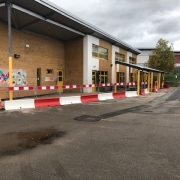Rising to the reading challenge

After a year of disruption to the education of children (despite the best efforts of teachers), the demands of supporting all children, who may have had very different experiences of learning, remains paramount. However, the disparity between the informal learning around communication and access to literature children have received, makes this even more challenging.
To make things more complicated, National Literacy Trust (NLT) research found children from disadvantaged backgrounds were less likely to be read to – but that just over a third of all children read more in lockdown. All classrooms have a mix of children who are ahead of expectations as well as those who are working towards these and both groups need assessment and support.
Establishing a baseline is crucial. A simple assessment is best – one that saves time and is easy to administer. Lexplore Analytics [add link] (used in many schools) does just this and ensures that continued progress can be monitored. Once you know where children are at, they can be supported and challenged as appropriate.
Fundamentally, educators must find the ‘spark’ that ignites a love of reading, so that children develop this life-enhancing skill and also their overall learning. A few simple principles will help to create an environment in which children can learn, improve and succeed.
Multisensory Learning
If learning can be approached by bombarding all of the senses and involving pupils themselves in their learning, this will ensure they enjoy what they do, and the learning is far more likely to be retained. Many educators already have wonderful ways of doing this. A few top tips include using a
multisensory approach, encouraging children to ‘see it, hear it, feel it, say it’ as they work with phonemes and words.
Read to Succeed!
Nurturing a love of reading is the key. The material being read is not really the issue; more that children are reading something. This can be anything, from the latest Donaldson or Dahl, to ‘Lego’ instructions, recipes, magazines, comics, online articles and even subtitles on television programmes! Recent research showed turning on the subtitles could double a child’s chances of becoming good at reading.
Paired reading with an adult or peer is probably the most effective way of understanding text, particularly for children who think faster than they currently read. It is important to ensure that children choose their own material.
Reading is also about listening. The NLT suggests that audiobooks can be helpful with all readers as listening while following the text means they can access more complex material.
We hope these ideas, alongside many others educators already have in their toolkit, will help spark the love of reading, giving children access to a vital skill and a lifetime of enjoyment. As one child told the National Literacy Trust: “There’s not really much to do… so I read, and when I do, it makes me feel like I’m in a different place, not stuck inside.”
Rachel Gelder and Pamela Hanigan from LDIGS are the authors of the Lexplore Analytics free Recovery Curriculum Guide to Reading. Download the guide at http://bit.ly/LexploreRecoveryReadingGuide


